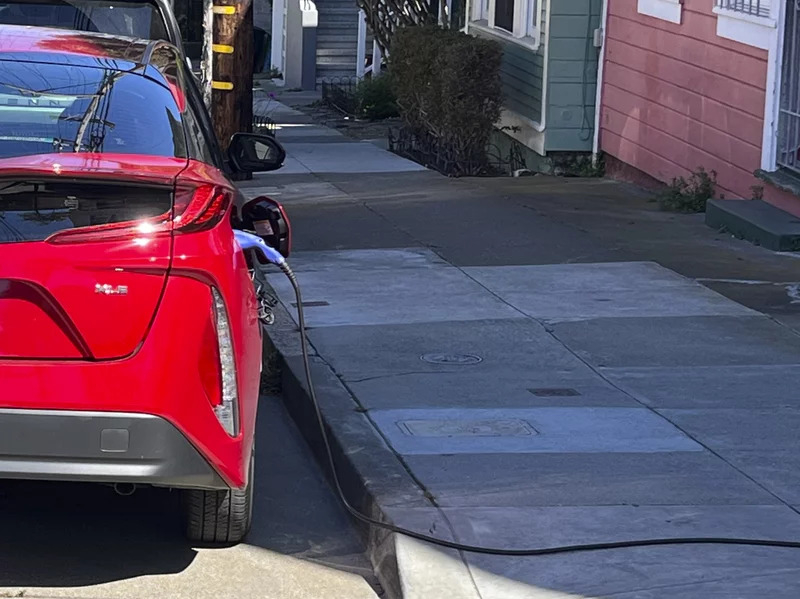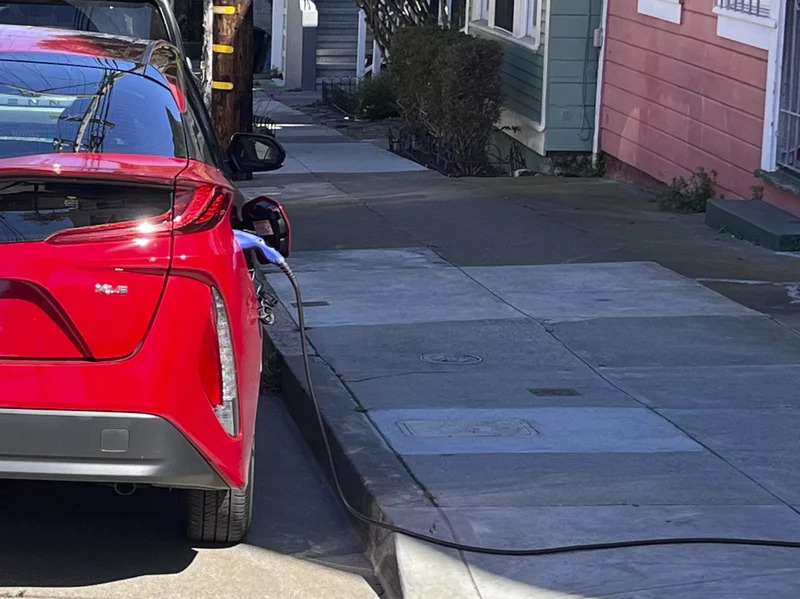Millions of charging stations are needed to meet the EV demand
Nationwide, there are about 120,000 public charging ports featuring Level 2 charging or above, and nearly 1.5 million electric vehicles registered in the U.S. — a ratio of just over one charger per 12 cars nationally, according to the latest U.S. Department of Energy data.
A briefing prepared for the U.S. Department of Energy last year by the Pacific Northwest National Laboratory forecasts a total of just under 19 million electric vehicles on the road by 2030, with a projected need for an extra 9.6 million charging stations.
In Los Angeles, for example, nearly one-quarter of all new vehicles registered in July were plug-in. The city estimates in the next two decades, it must expand its distribution capacity anywhere from 25% to 50%, with roughly two-thirds of the increased demand coming from EVs, said Yamen Nanne, manager of Los Angeles Department of Water and Power's transportation electrification program.
Amid the boom, dense city neighborhoods are rapidly becoming pressure points.
Several cities are installing pole-mounted EV chargers
In Los Angeles, the city has installed over 500 pole-mounted EV chargers — 450 on street lights and 50 on power poles — and wants to add 200 more per year, Nanne said.
Similar initiatives to install pole-mounted chargers are in place or being considered from New York City to Charlotte, N.C. to Kansas City, Missouri. The utility Seattle City Light is also in the early stages of a pilot project to install chargers in neighborhoods with limited private parking.
Other cities want to amend building codes for the electric transition. Portland is considering a proposal that would require 50% of parking spaces in most new apartment complexes to have an electrical conduit; in complexes with six or fewer spaces, all of them would be EV-ready.
Such policies are critical to widespread EV adoption because with tax incentives and an emerging used-EV market, zero-emissions cars are finally within reach for more Americans, said Ingrid Fish, who is in charge of Portland's transportation decarbonization program.
The initiatives mimic those that have already been deployed in other nations that are further along in EV adoption.
London, for example, has 4,000 public chargers on street lights. That's much cheaper — just a third the cost of wiring a charging station into the sidewalk, said Vishant Kothari, manager of the electric mobility team at the World Resources Institute.
But London and Los Angeles have an advantage over many U.S. cities: Their street lights operate on 240 volts, better for EV charging. Most American city street lights use 120 volts, which takes hours to charge a vehicle, said Kothari, who co-authored a study on the potential for pole-mounted charging in U.S. cities.
So cities must use a mix of solutions, from zoning changes to policies that encourage workplace fast-charging.
Changes can't come fast enough for renters who already own electric vehicles.
Rebecca DeWhitt and her partner string an extension cord from an outlet near their rental home's front door, down a path and to their new Hyundai Kona in the driveway. Off the standard outlet, it takes up to two days and lots of planning to fully charge their EV for a trip.
"It's inconvenient," DeWhitt said. "And if we didn't value having an electric vehicle so much, we wouldn't put up with the pain of it."





